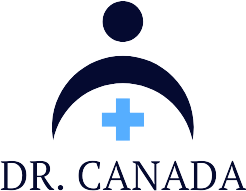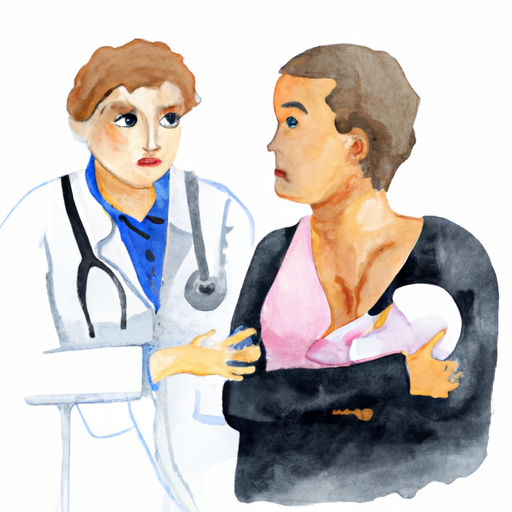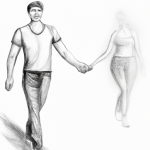Mastitis, a common condition among breastfeeding women, can be a distressing and painful experience. Understanding its symptoms, causes, and diagnosis is crucial for early intervention and effective treatment. In this article, we will explore the various aspects of mastitis, from its onset and identification to the treatment options available. We will delve into the different medications and home remedies that can provide relief, as well as preventive measures that can be taken to avoid mastitis altogether. Additionally, we will discuss how to manage the symptoms of mastitis and promote overall breast health. Whether you are a new mother or someone seeking information on mastitis, this article will equip you with the knowledge needed to navigate this condition with confidence and ease.
1. Understanding Mastitis: Symptoms, Causes, and Diagnosis
Mastitis is a common condition that affects breastfeeding women, causing inflammation of the breast tissue. It is essential to understand the symptoms, causes, and diagnosis of mastitis to ensure prompt treatment and prevent complications.
Symptoms of mastitis usually develop rapidly, with affected women experiencing breast pain, tenderness, and swelling. The affected breast may become red, warm to the touch, and have an engorged appearance. Other common symptoms include fever, chills, body aches, and fatigue. In some cases, women may develop flu-like symptoms.
The primary cause of mastitis is a bacterial infection, often resulting from cracked or damaged nipples. Bacteria can enter the breast tissue through these openings, causing an inflammatory response. The most common bacteria responsible for mastitis are Staphylococcus aureus, which are commonly found on the skin and in the nasal passages.
However, mastitis can also occur without an infection, known as non-infectious mastitis. This can result from blocked milk ducts, ineffective milk removal, or milk stasis. Non-infectious mastitis is more common in the early stages of breastfeeding when milk supply and demand are not yet balanced.
Early diagnosis of mastitis is crucial to prevent complications and ensure effective treatment. A healthcare provider will typically diagnose mastitis based on the symptoms and a physical examination of the affected breast. The presence of redness, warmth, and swelling, combined with the characteristic symptoms, can confirm the diagnosis.
In some cases, a healthcare provider may recommend additional tests, such as a breast milk culture or blood tests, to identify the specific bacteria causing the infection. These tests can help determine the most appropriate antibiotic treatment.
It is important to distinguish mastitis from other breast conditions, such as a blocked milk duct or a breast abscess. A blocked milk duct usually presents with a tender lump, while a breast abscess is characterized by a localized collection of pus. Differentiating between these conditions is crucial for appropriate management.
In conclusion, understanding the symptoms, causes, and diagnosis of mast
2. Effective Treatment Options for Mastitis: Medications, Home Remedies, and Prevention
When it comes to mastitis, effective treatment options are crucial to alleviate symptoms and promote a quick recovery. There are various approaches to treating this condition, including medications, home remedies, and preventive measures.
1. Medications:
The most common medication prescribed for mastitis is antibiotics. These drugs help eliminate the bacterial infection causing the inflammation in the breast tissue. It is essential to complete the full course of antibiotics as prescribed by your healthcare provider, even if symptoms improve before the medication is finished. This ensures that the infection is completely eradicated and reduces the risk of recurrence.
In some cases, pain relievers such as ibuprofen or acetaminophen may be recommended to alleviate discomfort and reduce inflammation. These over-the-counter medications can provide temporary relief and facilitate the healing process.
2. Home Remedies:
Alongside medical treatment, several home remedies can help relieve mastitis symptoms and promote healing. Applying warm compresses to the affected breast can help reduce pain and inflammation. The warmth also aids in improving blood circulation, which accelerates the healing process. Gently massaging the breast while applying the warm compress can further assist in relieving any clogged milk ducts.
Another effective home remedy is frequently breastfeeding or expressing milk. This helps ensure that the milk continues to flow, preventing further blockages and reducing the risk of infection. It also aids in draining the breast and relieving discomfort.
Maintaining good breast hygiene is vital when dealing with mastitis. Ensure that you thoroughly clean your nipples and breasts before and after each feeding. Additionally, wearing loose-fitting clothing and using nursing pads can help prevent further irritation and promote better airflow.
3. Prevention:
Prevention is always better than cure. To reduce the risk of developing mastitis, it is crucial to establish a proper breastfeeding routine. Ensure that your baby latches onto the breast correctly, as a poor latch can lead to ineffective milk removal and potential blockages. Switching breastfeeding positions regularly can also help ensure adequate milk drainage.
Avoiding tight-fitting bras or underwire bras can prevent unnecessary pressure
3. Seeking Relief: Managing Mastitis Symptoms and Promoting Breast Health
Mastitis is a painful and frustrating condition that affects many breastfeeding women. It occurs when the breast tissue becomes inflamed and infected, often due to bacteria entering the milk ducts through a cracked or sore nipple. While it is essential to seek medical diagnosis and treatment for mastitis, there are also several ways to find relief from the symptoms and promote overall breast health.
One of the most effective ways to manage mastitis symptoms is through frequent breastfeeding or expressing breast milk. This helps to keep the milk flowing and prevents the buildup of milk in the breast, which can worsen the infection. It is important to empty the affected breast as much as possible, even if it is painful. Applying a warm compress to the breast before feeding can help to alleviate discomfort and promote milk flow.
Pain relief is crucial in managing mastitis symptoms. Over-the-counter pain medications such as ibuprofen or acetaminophen can help to reduce pain and inflammation. It is important to consult with a healthcare professional before taking any medication, especially while breastfeeding, to ensure it is safe for both the mother and the baby.
Rest and self-care are vital components of managing mastitis symptoms. It is essential to prioritize rest and take breaks when needed. This allows the body to heal and recover more efficiently. Adequate sleep, a balanced diet, and staying hydrated are all essential for maintaining overall breast health and promoting a quick recovery.
In some cases, a healthcare professional may prescribe antibiotics to treat the infection. It is crucial to complete the entire course of antibiotics, even if symptoms improve before the medication is finished. Failure to do so may result in a recurring or more severe infection.
Prevention plays a significant role in promoting breast health and reducing the risk of mastitis. Taking steps to prevent cracked or sore nipples, such as ensuring a proper latch during breastfeeding, can help reduce the likelihood of infection. Maintaining good hygiene by washing hands before breastfeeding and keeping breast pump equipment clean can also help prevent bacteria from entering the milk ducts.
In conclusion, managing mastitis symptoms and promoting



